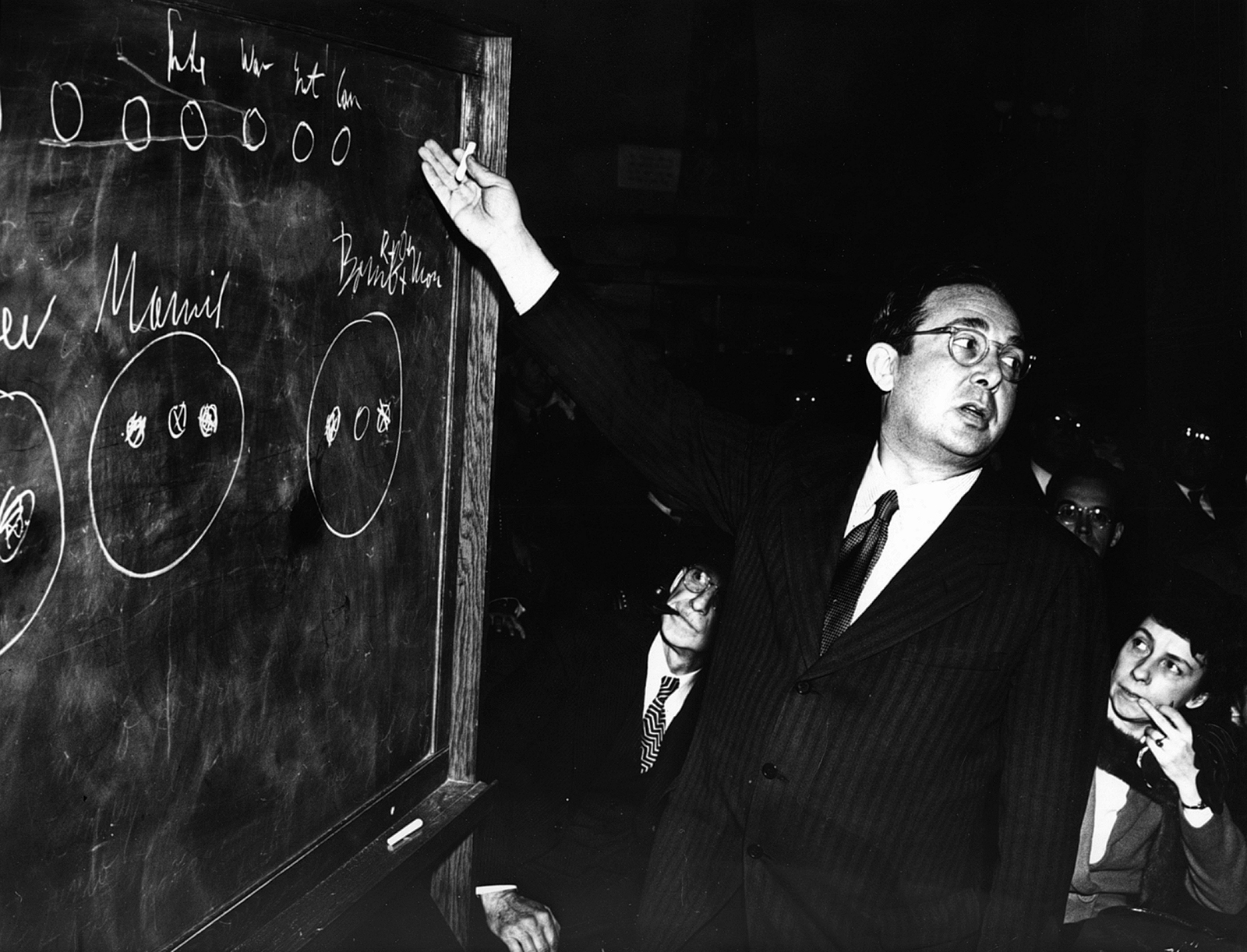Bohr's Trip to America
Einstein himself, nearly thirty-five years before, had said this theory might be proved, by further study of radioactive elements. Niels Bohr was planning a trip to America to discuss other problems with Einstein who had found a haven at Princeton's Institute for Advanced Studies. Bohr came to America, but the principal item he discussed with Einstein was the report of Meitner and Frisch. Bohr arrived at Princeton on January 16, 1939. He talked to Einstein and J. A. Wheeler who had once been his student. From Princeton the news spread by word of mouth to neighboring physicists, including Enrico Fermi at Columbia. Fermi and his associates immediately began work to find the heavy pulse of ionization which could be expected from the fission and consequent release of energy.

Before the experiments could be completed, however, Fermi left Columbia to attend a conference on theoretical physics at George Washington University in Washington, D.C. Here Fermi and Bohr exchanged information and discussed the problem of fission. Fermi mentioned the possibility that neutrons might be emitted in the process. In this conversation, their ideas of the possibility of a chain reaction began to crystallize.
Before the meeting was over, experimental confirmation of Meitner and Frisch's deduction was obtained from four laboratories in the United States (Carnegie Institution of Washington, Columbia, Johns Hopkins, and the University of California). Later it was learned that similar confirmatory experiments had been made by Frisch and Meitner on January 15th. Frederic Joliot-Curie in France, too, confirmed the results and published them in the January 30th issue of the French scientific journal, Comptes rendus.
On February 27, 1939, the Canadian-born Walter H. Zinn and Leo Szilard, a Hungarian, both working at Columbia University, began their experiments to find the number of neutrons emitted by the fissioning uranium. At the same time, Fermi and his associates, Herbert L. Anderson and H. B. Hanstein, commenced their investigation of the same problem. The results of these experiments were published side-by-side in the April edition of the Physical Review and showed that a chain reaction might be possible since the uranium emitted additional neutrons when it fissioned.

These measurements of neutron emission by Fermi, Zinn, Szilard, Anderson, and Hanstein were highly significant steps toward a chain reaction.
Further impetus to the work on a uranium reactor was given by the discovery of plutonium at the Radiation Laboratory, Berkeley, California, in March, 1940. This element, unknown in nature, was formed by uranium-238 capturing a neutron, and thence undergoing two successive changes in atomic structure with the emission of beta particles. Plutonium, it was believed, would undergo fission as did the rare isotope of uranium, U235.
Meanwhile, at Columbia, Fermi and Zinn and their associates were working to determine operationally possible designs of a uranium chain reactor. Among other things, they had to find a suitable moderating material to slow down the neutrons traveling at relatively high velocities. In July, 1941, experiments with uranium were started to obtain measurements of the reproduction factor (called "k"), which was the key to the problem of a chain reaction. If this factor could be made sufficiently greater than 1, a chain reaction could be made to take place in a mass of material of practical dimensions. If it were less than 1, no chain reaction could occur.
Since impurities in the uranium and in the moderator would capture neutrons and make them unavailable for further reactions, and since neutrons would "escape" from the pile without encountering uranium-235 atoms, it was not known whether a value for "k" greater than unity could ever be obtained.
Fortunate it was that the obtaining of a reproduction factor greater than 1 was a complex and difficult problem. If Hitler's scientists had discovered the secret of controlling the neutrons and had obtained a working value of "k," they would have been well on the way toward producing an atomic bomb for the Nazis.
Now the Lawrence Berkeley Radiation Laboratory, operated for the U.S. Department of Energy by the University of California.